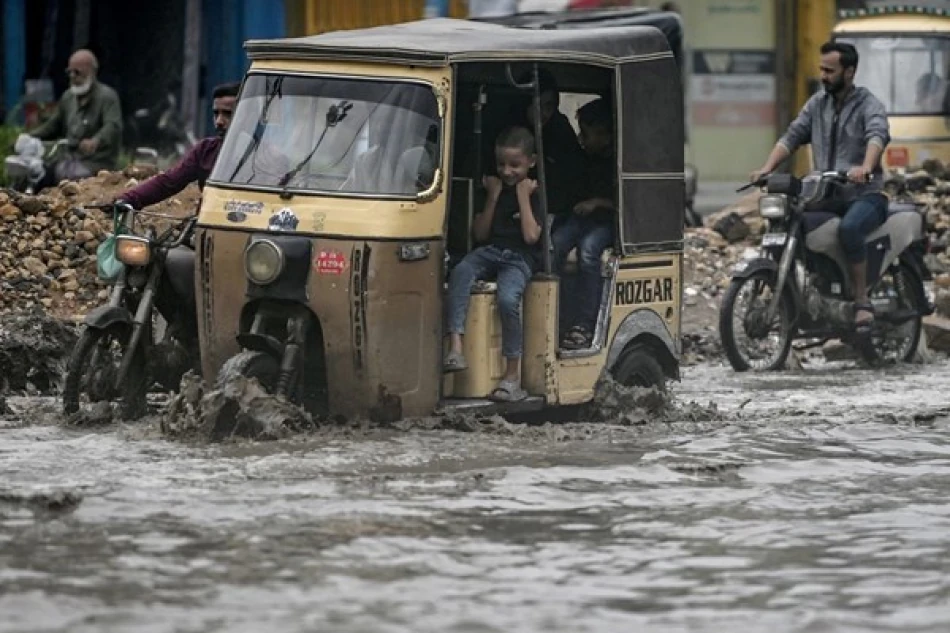
Devastating Floods Ravage Pakistan: Death Toll Rises as Relief Efforts Intensify
Pakistan's Deadly Monsoon Season Claims Over 100 Lives as Climate Crisis Intensifies
Pakistan is grappling with one of its most devastating monsoon seasons in recent years, with over 100 people killed by torrential rains and flash floods that have swept across the country since June. The disaster, which has claimed at least 53 children among its victims, underscores Pakistan's growing vulnerability to extreme weather events driven by climate change and highlights the urgent need for improved disaster preparedness in South Asia's most flood-prone nation.
Scale of the Disaster
The National Disaster Management Authority reported that the monsoon rains, which began in Pakistan's northwest regions in June, have now engulfed the entire country. The death toll of 111 people primarily resulted from building collapses as structures weakened under weeks of relentless rainfall. More than 200 people have been injured, with Punjab province bearing the brunt of the casualties.
On Tuesday alone, floodwaters submerged streets and major thoroughfares in several cities for hours, bringing normal life to a standstill. The meteorological department has issued warnings that July and August will bring even more intense rainfall, threatening to swell rivers beyond capacity and trigger additional flooding.
A Pattern of Increasing Vulnerability
Historical Context
Pakistan's monsoon-related disasters have become increasingly severe over the past decade. The country experienced catastrophic flooding in 2010 that affected 20 million people, followed by devastating floods in 2022 that submerged one-third of the nation and caused $30 billion in damages. This year's early casualty figures suggest another potentially catastrophic season ahead.
Climate Change Amplification
Scientists have consistently linked Pakistan's extreme weather patterns to global climate change. The country, which contributes less than 1% of global greenhouse gas emissions, ranks among the world's most climate-vulnerable nations. Rising temperatures in the region have intensified monsoon patterns, creating more erratic and severe precipitation events.
Economic and Infrastructure Implications
The ongoing floods pose significant economic risks for Pakistan, which is already grappling with a severe financial crisis and IMF bailout negotiations. Agriculture, which employs nearly 40% of Pakistan's workforce, faces substantial crop losses during peak growing season. The flooding of major transportation arteries disrupts supply chains and trade routes, particularly affecting the economically vital Punjab province.
Pakistan's aging infrastructure, much of it built without adequate flood resilience measures, continues to prove inadequate against increasingly severe weather events. The repeated building collapses highlight the urgent need for updated construction standards and building codes that account for extreme weather scenarios.
Regional and Global Implications
Pakistan's monsoon crisis reflects broader challenges facing South Asian nations during an era of climate intensification. India, Bangladesh, and Nepal have all experienced similar increases in extreme weather events, suggesting that regional cooperation on disaster preparedness and climate adaptation has become critical for the subcontinent's stability.
The international community's response to Pakistan's recurring flood disasters will likely influence global climate adaptation funding discussions, particularly as developing nations push for increased financial support from industrialized countries responsible for the majority of historical emissions.
Looking Ahead
With meteorologists predicting continued heavy rainfall through August, Pakistan faces the prospect of mounting casualties and economic losses. The government's ability to manage this crisis while implementing long-term flood mitigation strategies will prove crucial for the country's resilience against future climate-related disasters.
The current monsoon season serves as another stark reminder that climate change impacts are not distant future concerns but present realities requiring immediate, comprehensive action from both national governments and the international community.
Most Viewed News

 Layla Al Mansoori
Layla Al Mansoori






